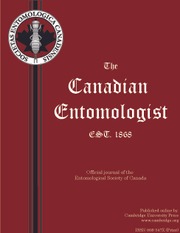Article contents
Repeated short-term thermal stress and its impact on reproductive fitness in parthenium beetle, Zygogramma bicolorata (Coleoptera: Chrysomelidae)
Published online by Cambridge University Press: 02 December 2024
Abstract
Insects experience variable temperature conditions in their natural environment, making constant temperature conditions in studies unrealistic. To address this, we investigated the effects of repeated short-term heat stress (STH) and short-term cold stress (STC) conditions on the pre-oviposition, oviposition, and post-oviposition periods, as well as on fecundity and egg viability of the parthenium beetle, Zygogramma bicolorata Pallister (Coleoptera: Chrysomelidae). We found that pre-oviposition periods were shortest under STH conditions and at the optimal temperature and longest under STC conditions. Conversely, oviposition and post-oviposition periods were longest at the optimal temperature. Oviposition periods were shortest under STH, whereas post-oviposition periods were shortest under both STH and STC conditions. Age-specific fecundity trends were triangular, and egg-viability trends were plateau-shaped at all temperatures. Females subjected to STH conditions experienced the highest oviposition peaks early in their adult life. Conversely, lifetime fecundity and longevity were highest at the optimal temperature, whereas egg viability was maximal under STH conditions. Regardless of the temperature they were maintained at, middle-aged females exhibited the highest fecundity and egg viability. Based on these results, despite reducing overall fecundity and longevity, STH conditions enhanced daily oviposition in females, with the peak occurring early in adult life. Additionally, both STH and STC conditions increased percentage egg viability in parthenium beetles.
Information
- Type
- Research Paper
- Information
- Copyright
- © The Author(s), 2024. Published by Cambridge University Press on behalf of Entomological Society of Canada
Footnotes
Subject editor: Katie Marshall
References
- 4
- Cited by


